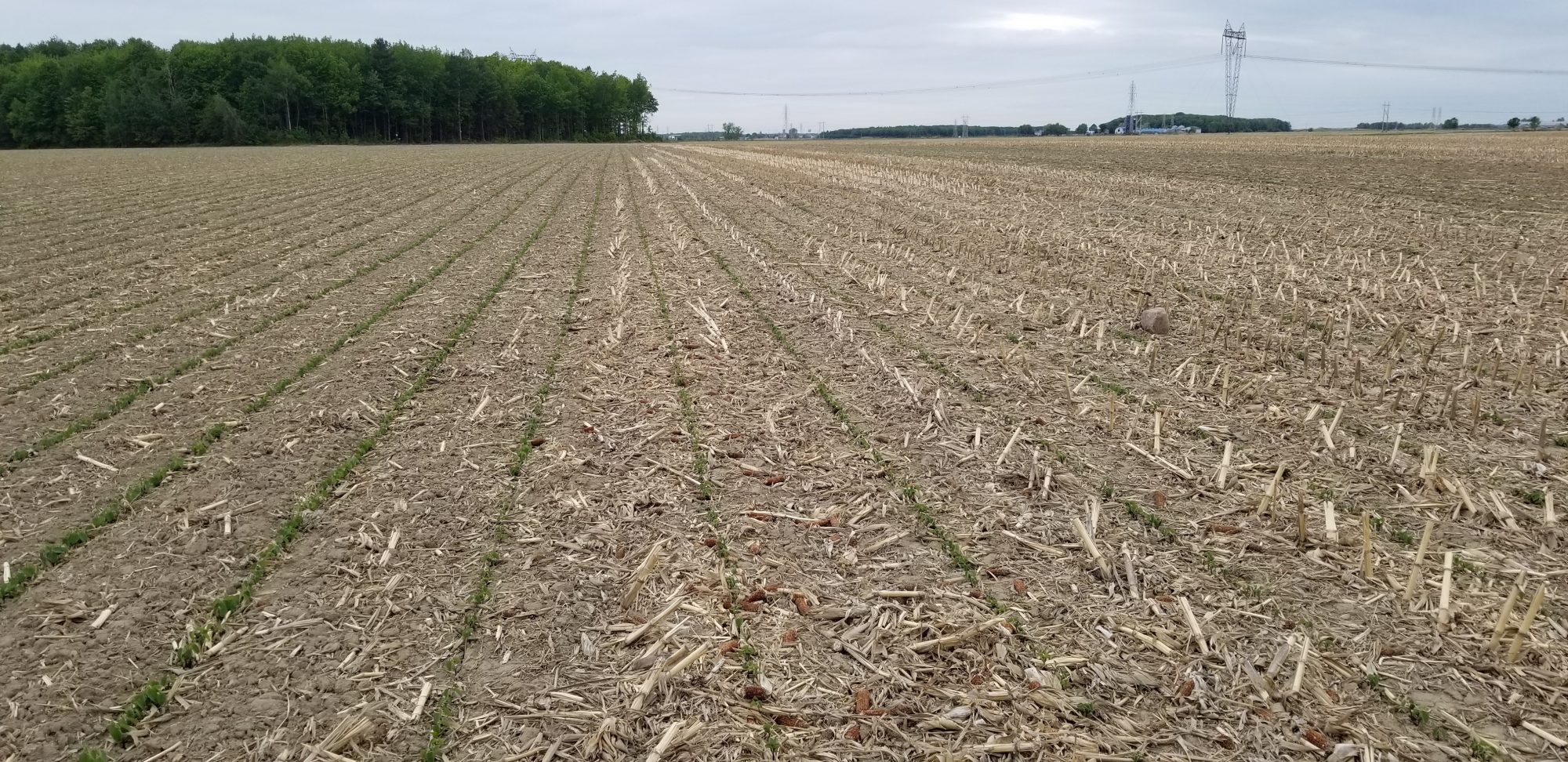There are a number of advantages to direct seeding (or no-till farming), including reduced costs, significant time saved in the spring and fall, medium-term improvement to the structure and biological activity of the soil, etc. This technique is becoming increasingly popular with soybean growers. That said, it is still unadvisable to adopt new production practices on impulse. It is important to seek out information and be well informed to master the technique, so as to avoid mistakes. This article explores direct seeding while taking a look back at the experience of the 2020 season.
Last fall, some growers harvested their crops late and didn’t have time to adequately till their soil. For many growers, it was then befitting to try direct seeding this spring, which was new to some. Let’s start off with a small case study. In the photo below, we can see that a grower has sown their crops conventionally on the right-hand side of their field, but was forced to use direct seeding for the left-hand side due to the harvest conditions of the 2019 season, and all on the same day. We can see that the left-hand side has nearly optimal soybean emergence, while the right-hand side, planted by the same grower, is less successful. It goes to show that the ideal seeding conditions are not the same for both techniques!

This highlights the importance of knowing the factors for a successful new growing practice. Here are a few of these factors:
- Get informed! To achieve an optimal yield and limit errors when you adopt direct seeding, you need to be informed from the outset.
- Take the environment into account. The conditions for applying the direct seeding technique won’t be the same in Montérégie as they are in Centre-du-Québec or in Eastern Ontario. It’s important to take the type of environment, type of soil and amount of residue into account if you are direct seeding in the centre of the row middles.
- Verify the seed depth.Like with corn crops, the seed depth is important when direct seeding. Too deep and the seed won’t emerge. Too shallow, and it will germinate but with a higher likelihood that the seedling dries out, leaving it no longer viable. Depending on the soil type and conditions, we recommended planting at a depth of 1 to 1.5 inches.
- Study the soil temperatures.Soil temperature is an important factor for direct seed planting. The ideal temperature is between 10 °C and 12 °C or higher, and it is important for the temperature to be increasing. You also need to remember that residue in the soil acts as insulation, keeping the soil cooler in some places. This soil will need an extra few days to warm up, compared with bare soil. Be careful, though: the soil won’t be the same temperature in every field!
- Increase seed quantity by 10%.To ensure an optimal yield from direct seeding, Prograin suggests using about 10% more seeds to ensure good emergence.
- Transition gradually.Before making the leap, why not try direct seeding in a small area of the field? This way you can take your time learning, studying and making necessary corrections to ensure you’re successful when growing on a larger area.
This year’s dry conditions have certainly not helped the emergence of soybeans planted by direct seeding, which is beyond our control. That said, it’s important to focus on mastering what we can in order to give ourselves the best chance of success. Do you plan to try direct seeding next year?
